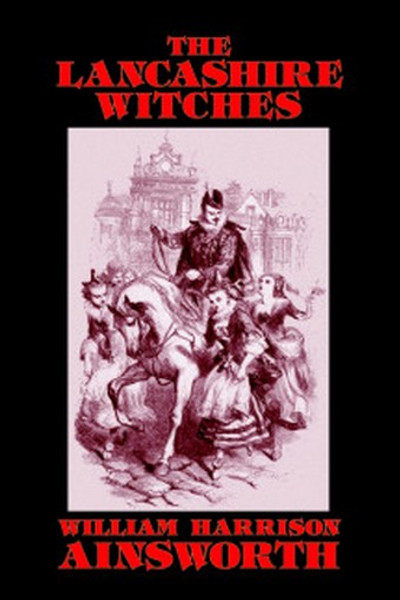As a Catholic with cherished ecumenical ties to Wicca, and also an opponent of "lookism," I ought to deplore this novel, based as it is on the weary old falsehood that witches worship Satan. (They do not! And they can, so, weep real tears.) For another, physical ugliness seems more or less to mark bad guyship, the good and sympathetic characters tending to be beautiful or handsome. And I can't really say we Catholics come out of it as well as the Old South tends to come out in fiction of our American Civil War.
Only, THE LANCASHIRE WITCHES is such a grand melodramatic yarn! It reads like the very best Gothic romance of a generation or two before Ainsworth.
Some years ago I read through a matching set of maybe a dozen Ainsworth novels. Strangely, they did not include this one. Perhaps it had been sold separately. My impression on consuming that set was that Ainsworth had a very dry, objective style, which worked well with dramatic material, toning it down and rendering it realistic; but could render a less than rip-roaring story soporific. Either my memory is at fault, or THE LANCASHIRE WITCHES is an exception: here, I found descriptive passages atmospherically reminiscent of Poe. Ainsworth is not great at drawing characters -- a minor player called Bess o' the Booth is perhaps the best-drawn one here -- but at least his characterizations do not get in the way of the reader's fleshing these individuals out. I found his trick just slightly annoying of having some of his characters talk in broad dialect while his principal sympathetic ones speak excellent formal English; but at least I rather quickly tumbled to the trick of following the dialect speeches. I thoroughly enjoyed the long cameo appearance of King James I of England in the final section of the book.
The witches do not present a unified front against their enemies. Like a house divided, they fall into at least two and maybe three factions: the Demdikes; Mother Chattox and her brood; and Alice Nutter, who finally repents. The third of the four parts comes to such a blazing climax that I wondered what action could be left; and yet somehow the fourth and last part, dealing with King James's (historical) visit to the area, did not feel anticlimactic. And all along the way, plenty of ghosts and demons and portraits coming to life and a general jampacking of Gothic storytelling.
When I compare the name of its anti-heroine with that of Agnes Nutter, the witch in Pratchett and Gaimon's delightful End of the World comedy GOOD OMENS; and reflect that one of the minor villains is named Blackadder, I must wonder uneasily if THE LANCASHIRE WITCHES has had a longer and wider influence on English-speaking culture than one might today suspect. If so, this seems a shame, presenting as it does so false a picture of a good and charitable Pagan religion, most of whose practitioners are as decent as most other folk. Face it, their suppression is just plain religious persecution. All in all, I really ought in conscience to deplore this novel, and twenty years ago I probably would have. Today, I can only excuse my enjoyment of it as a "guilty pleasure," and plead that I also tolerate literary anti-Catholicism quite well, if the storytelling is otherwise good enough.


